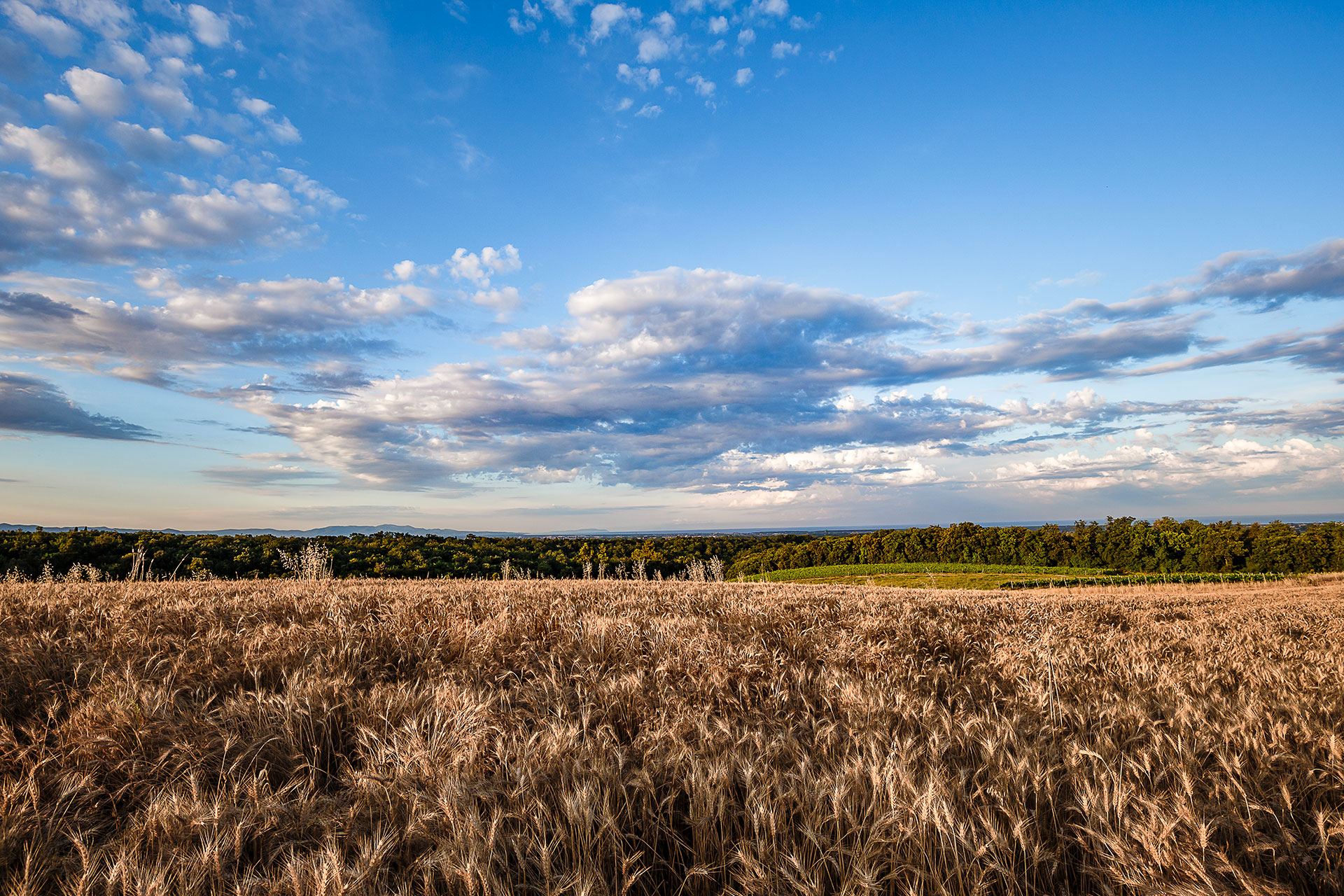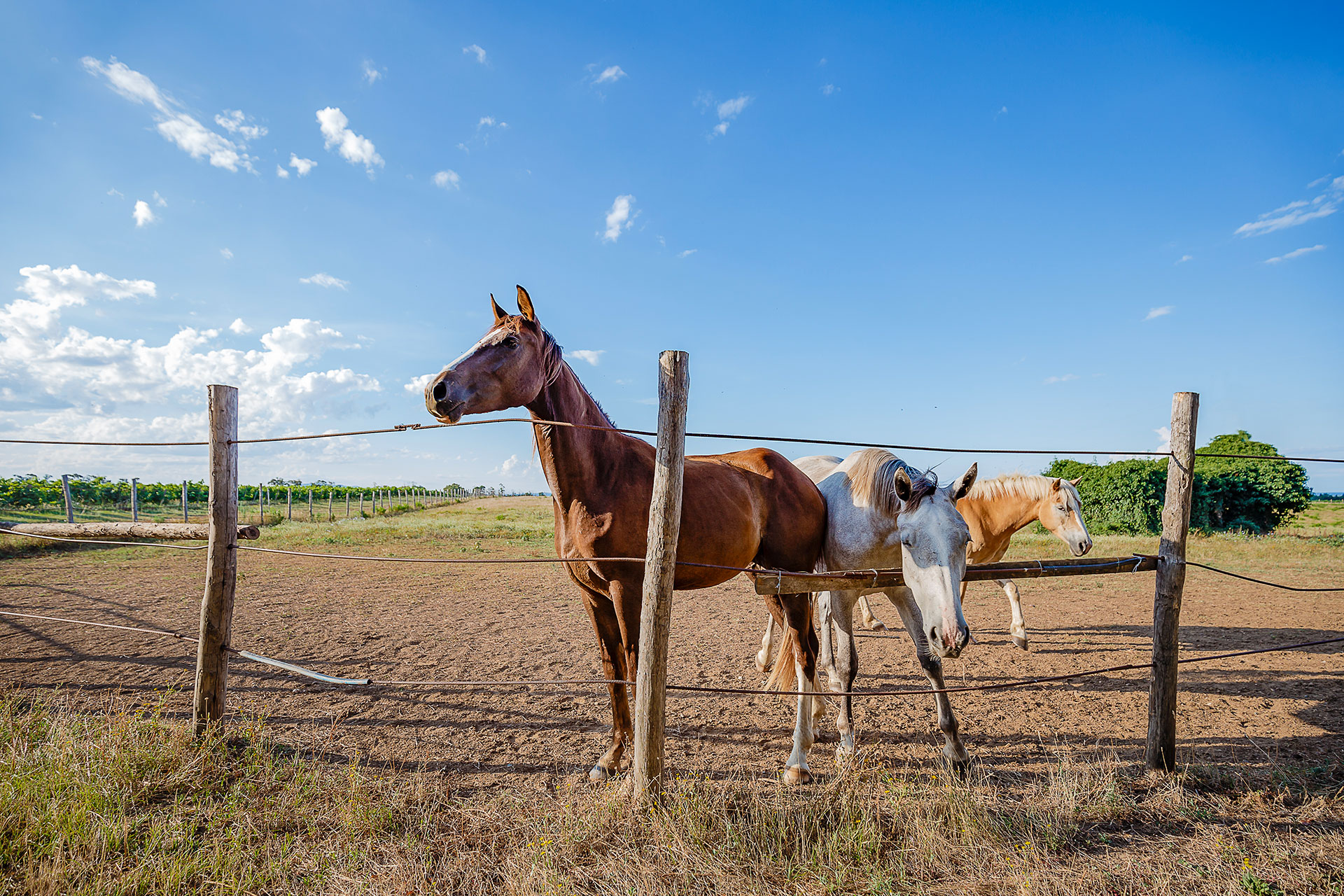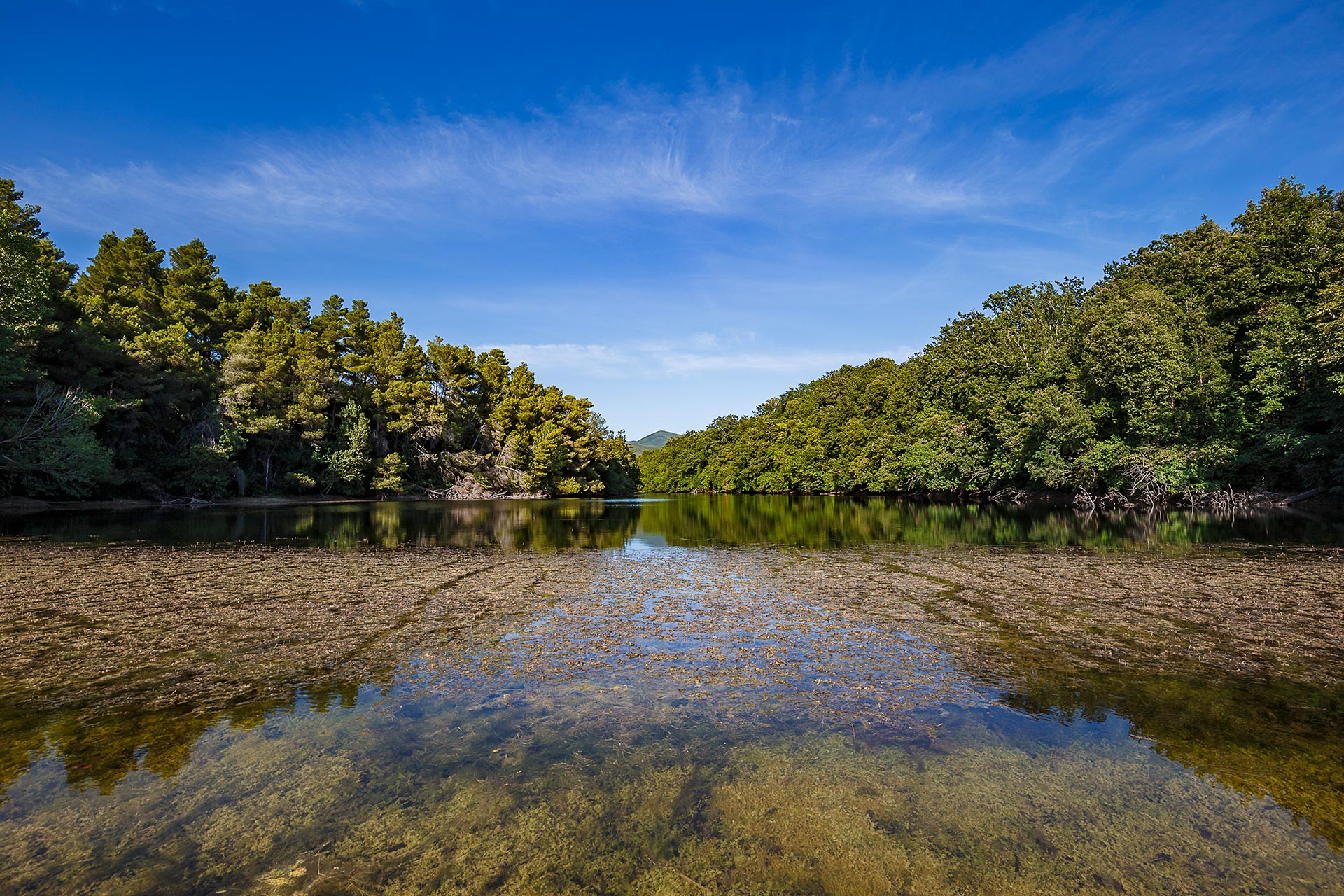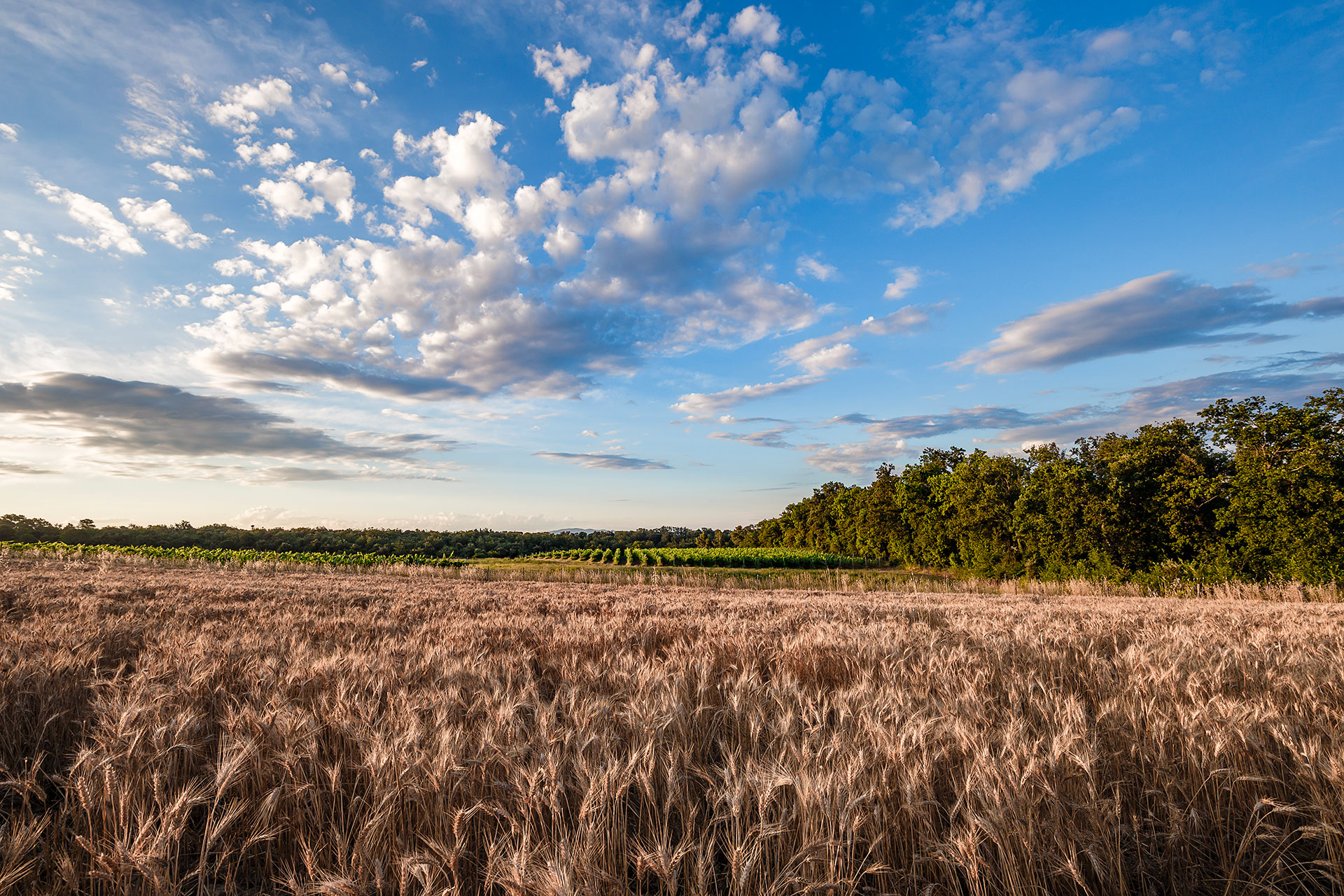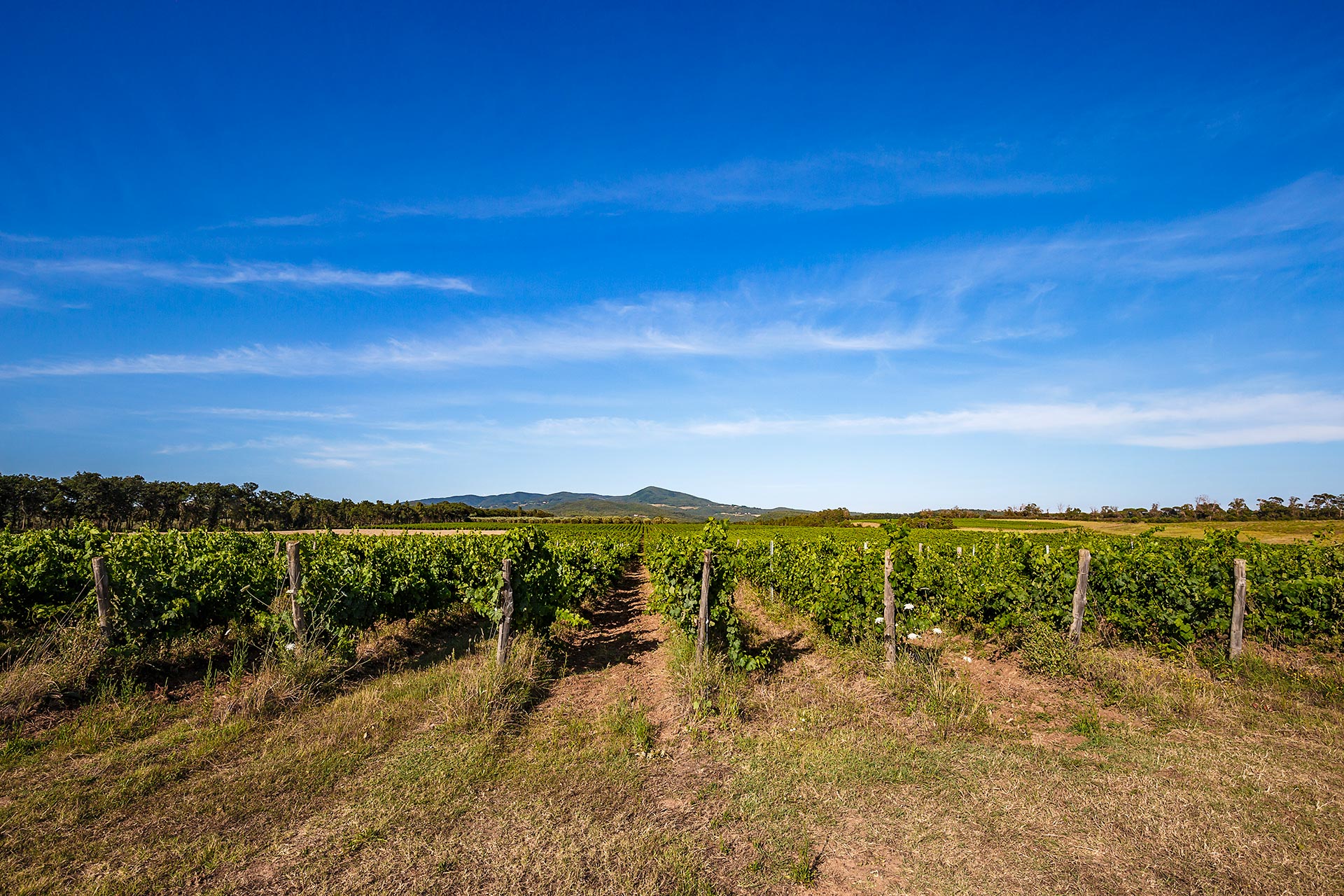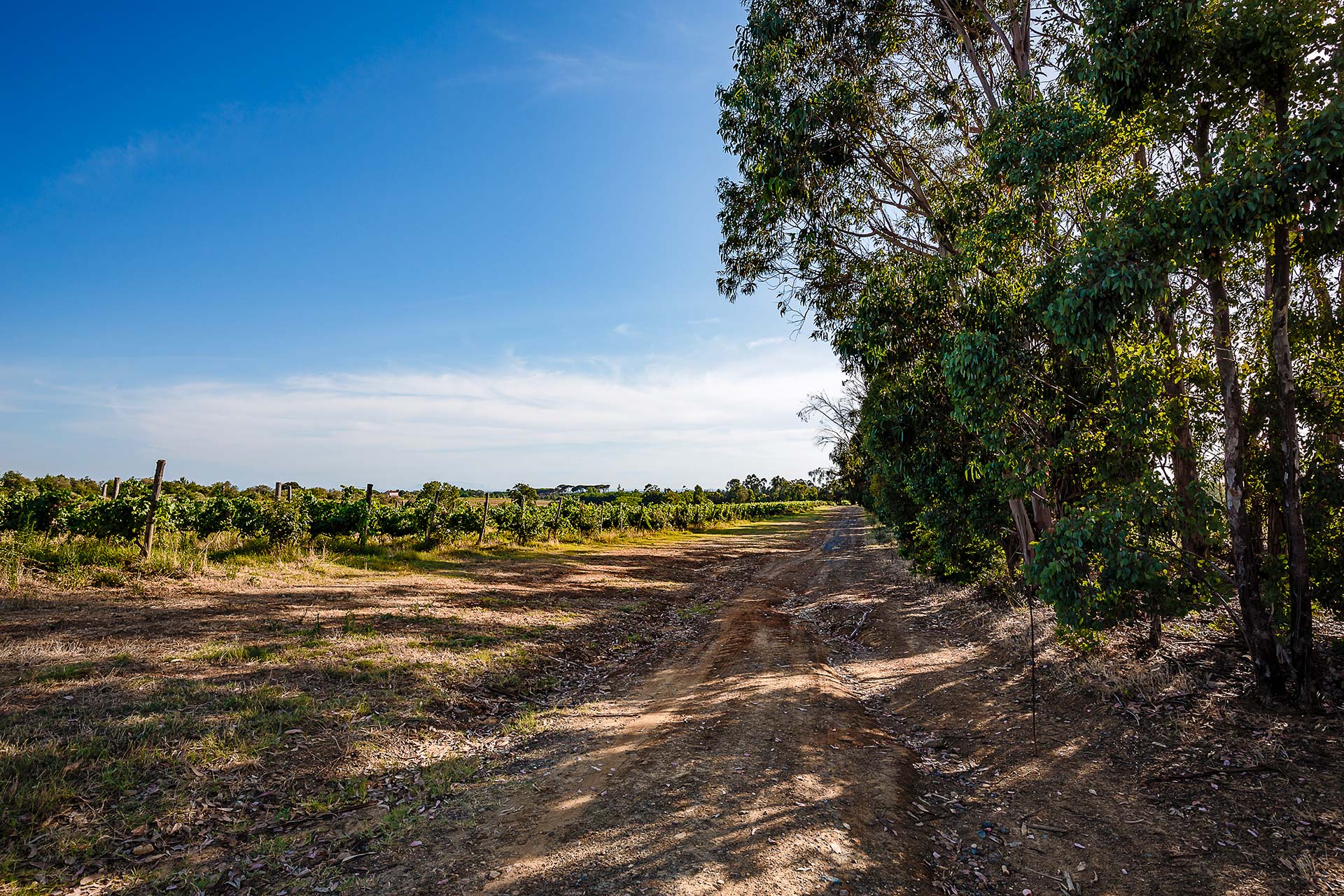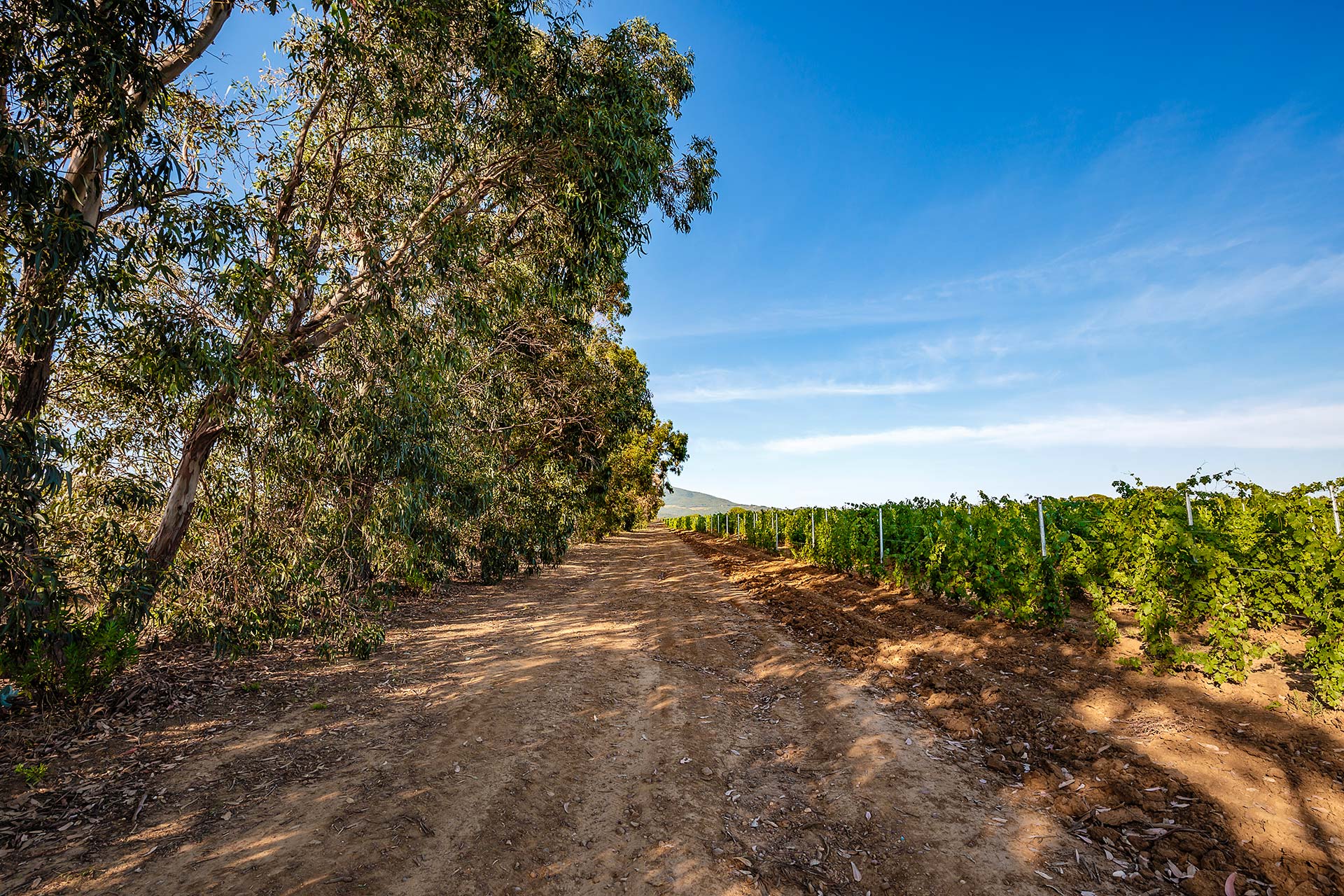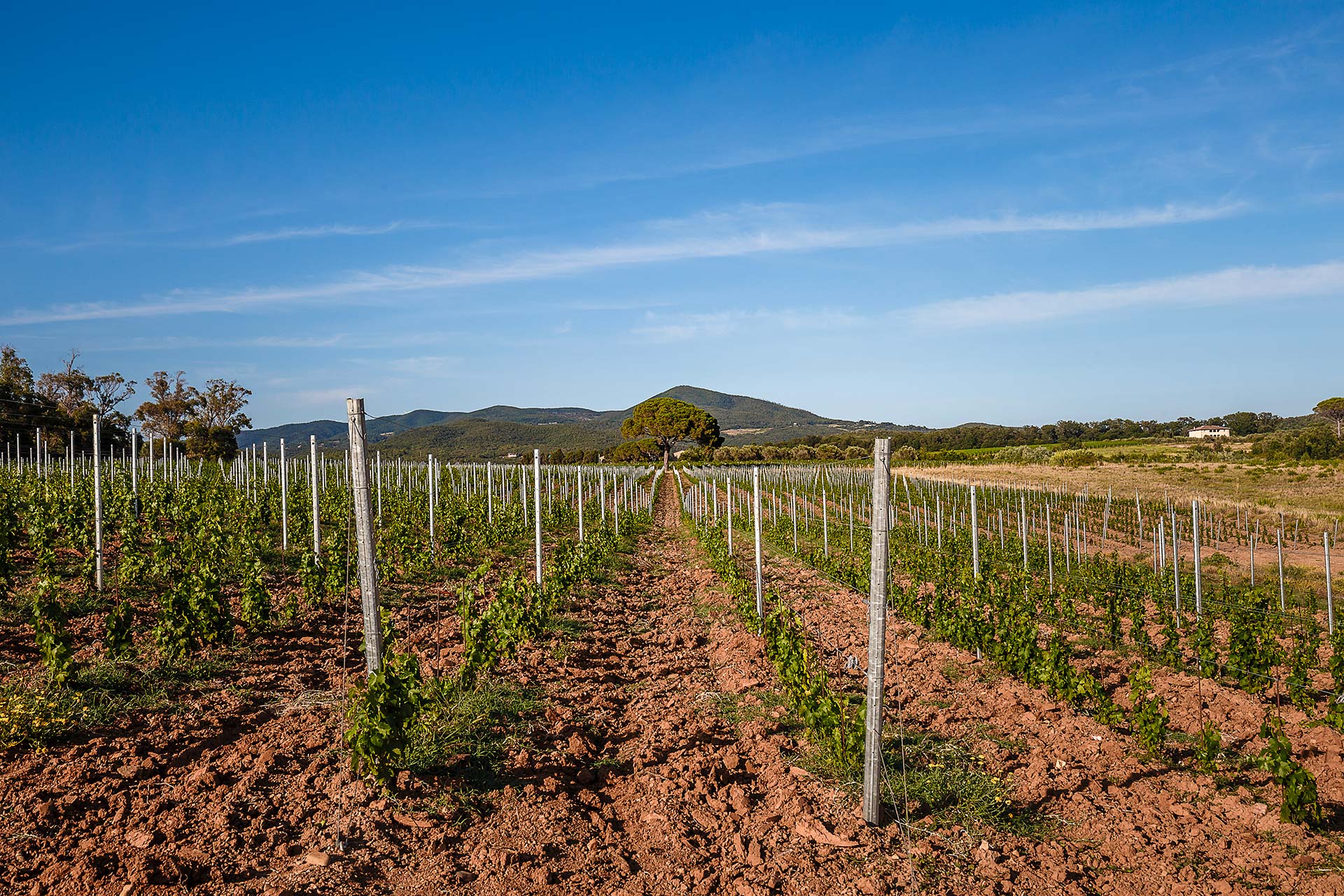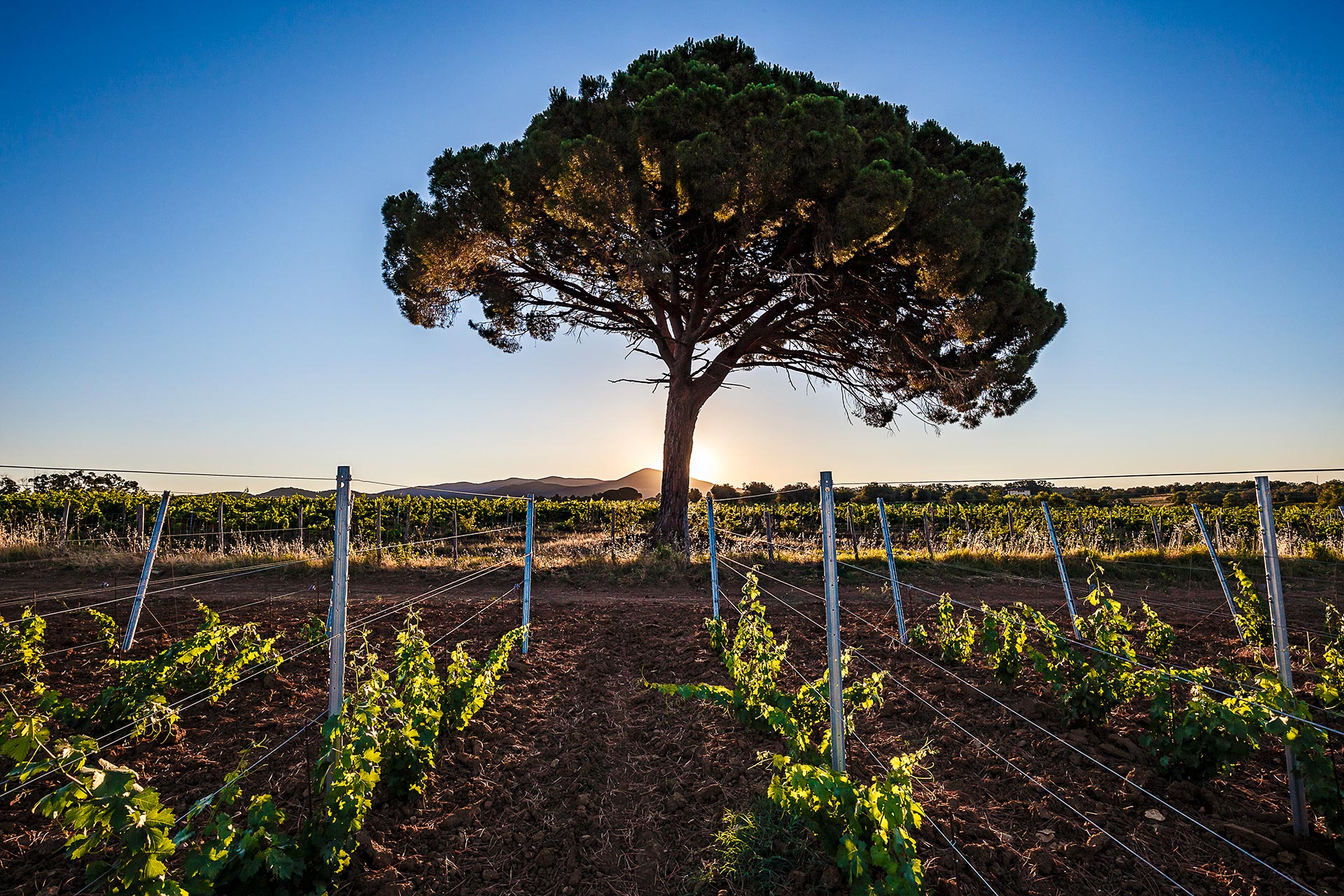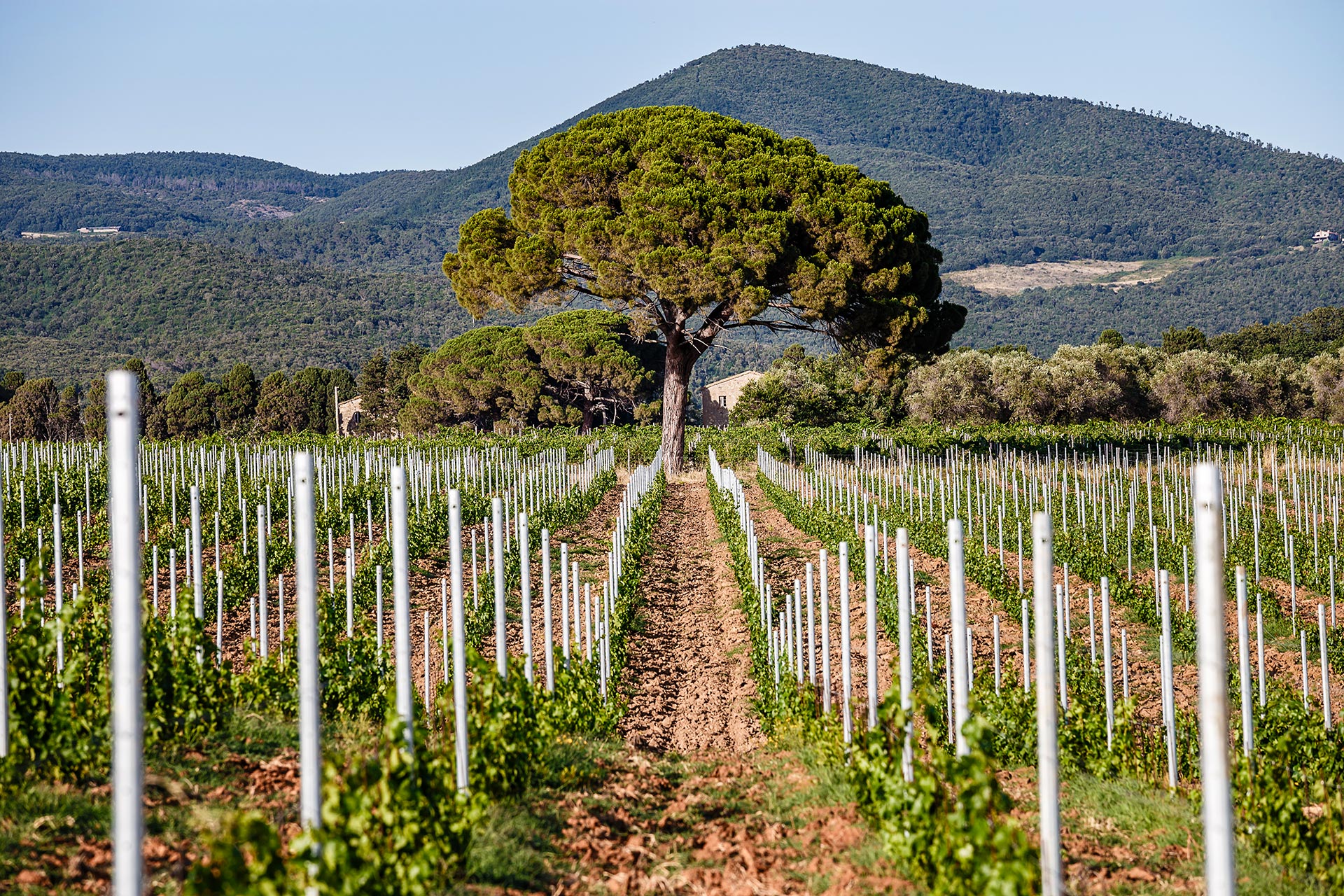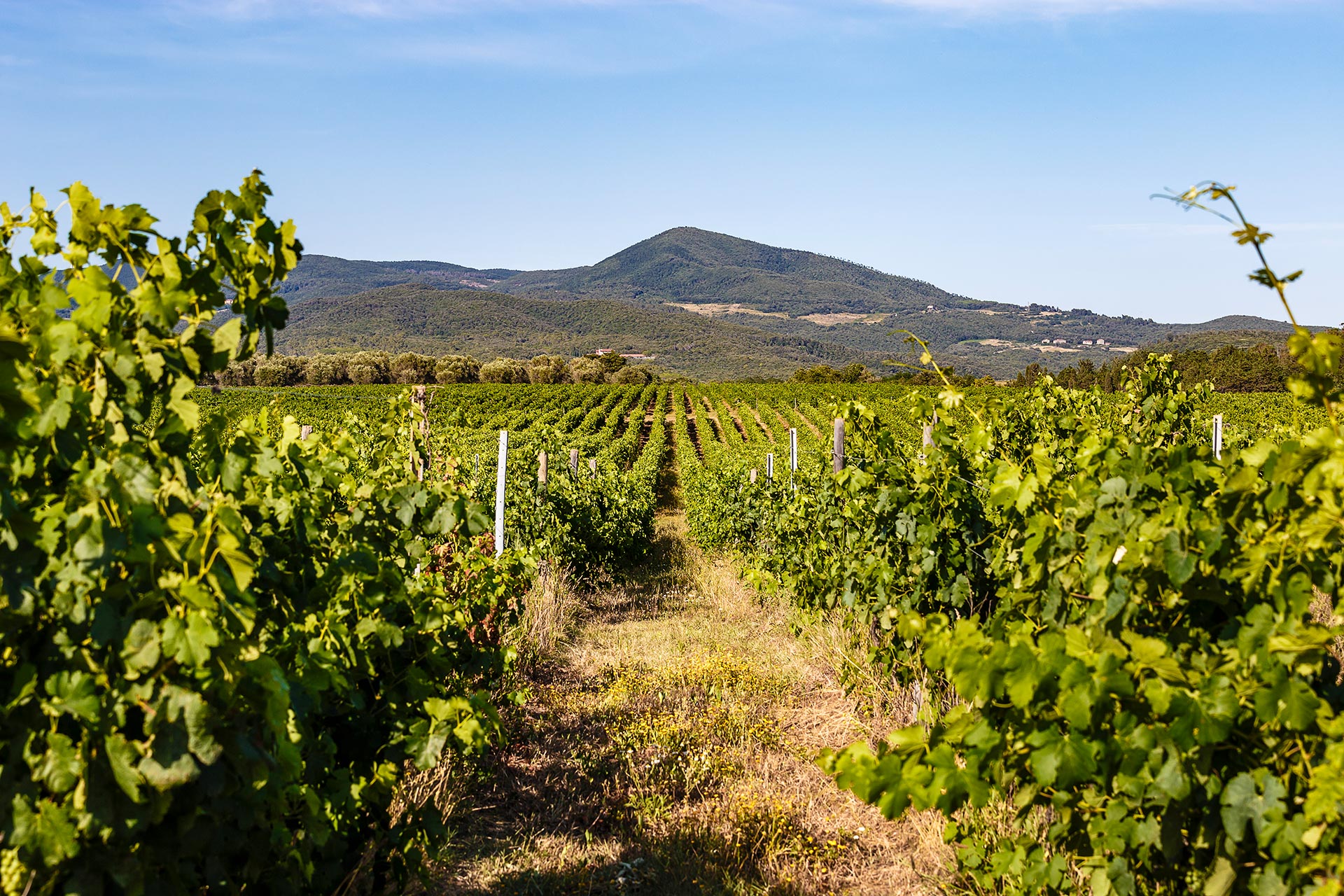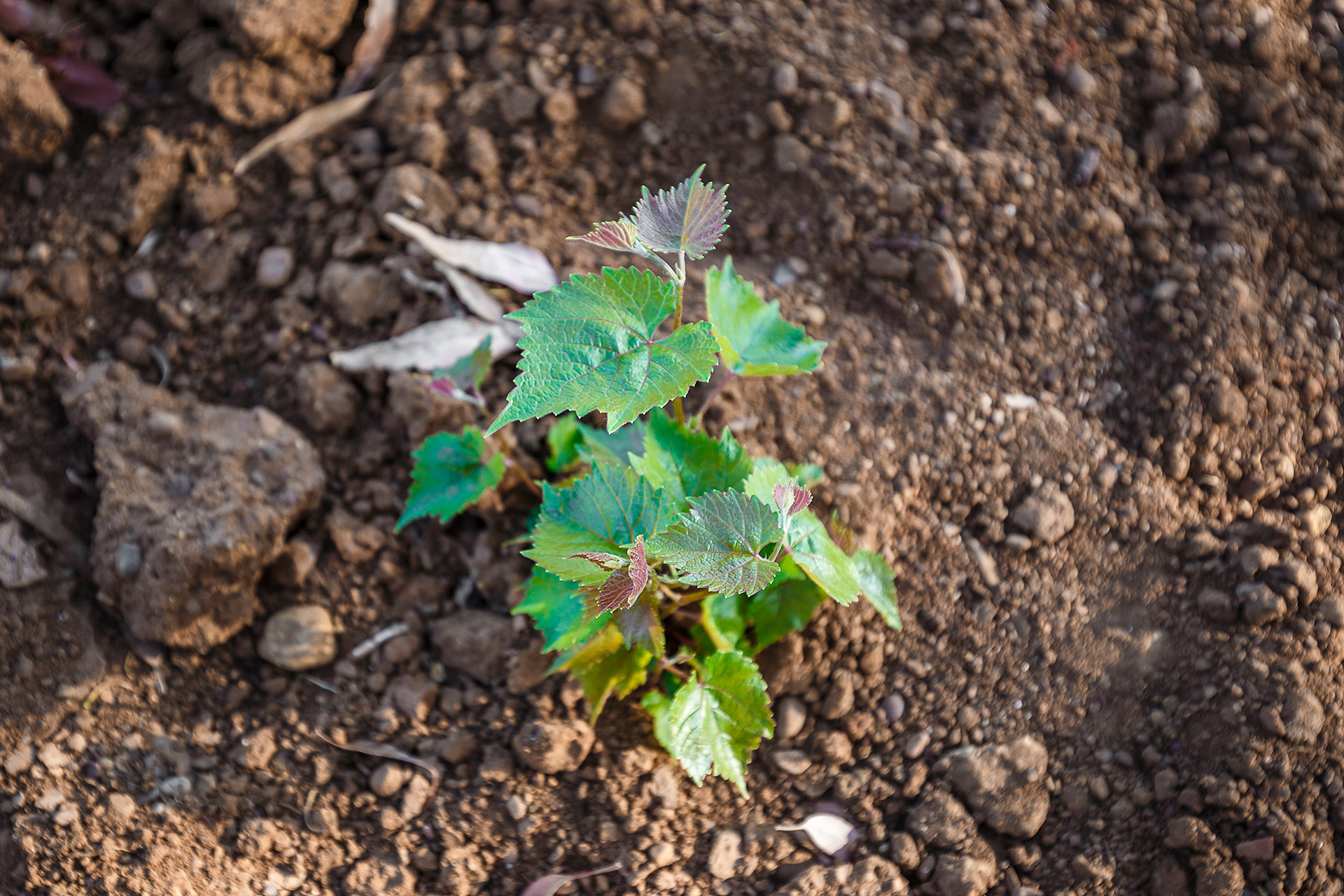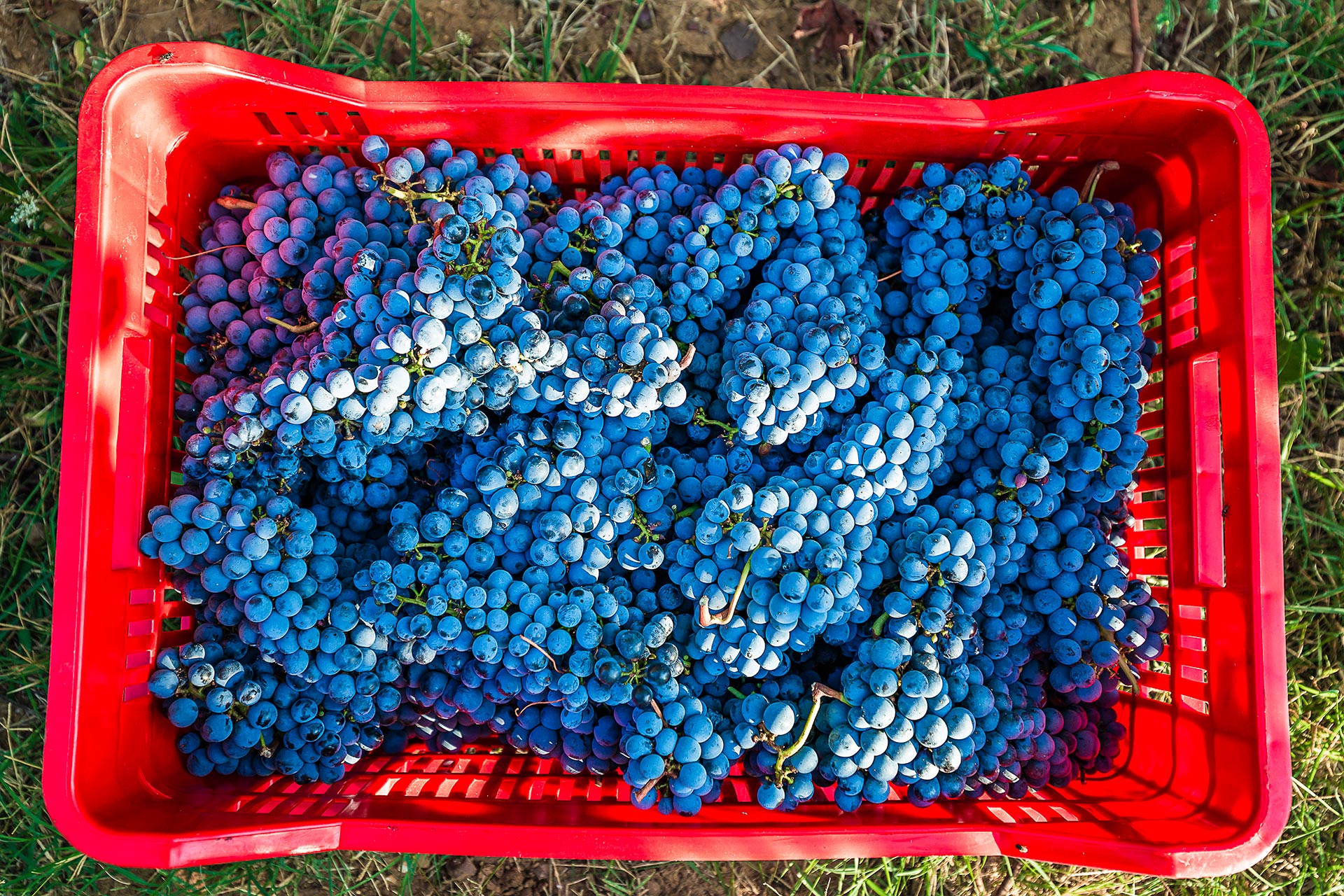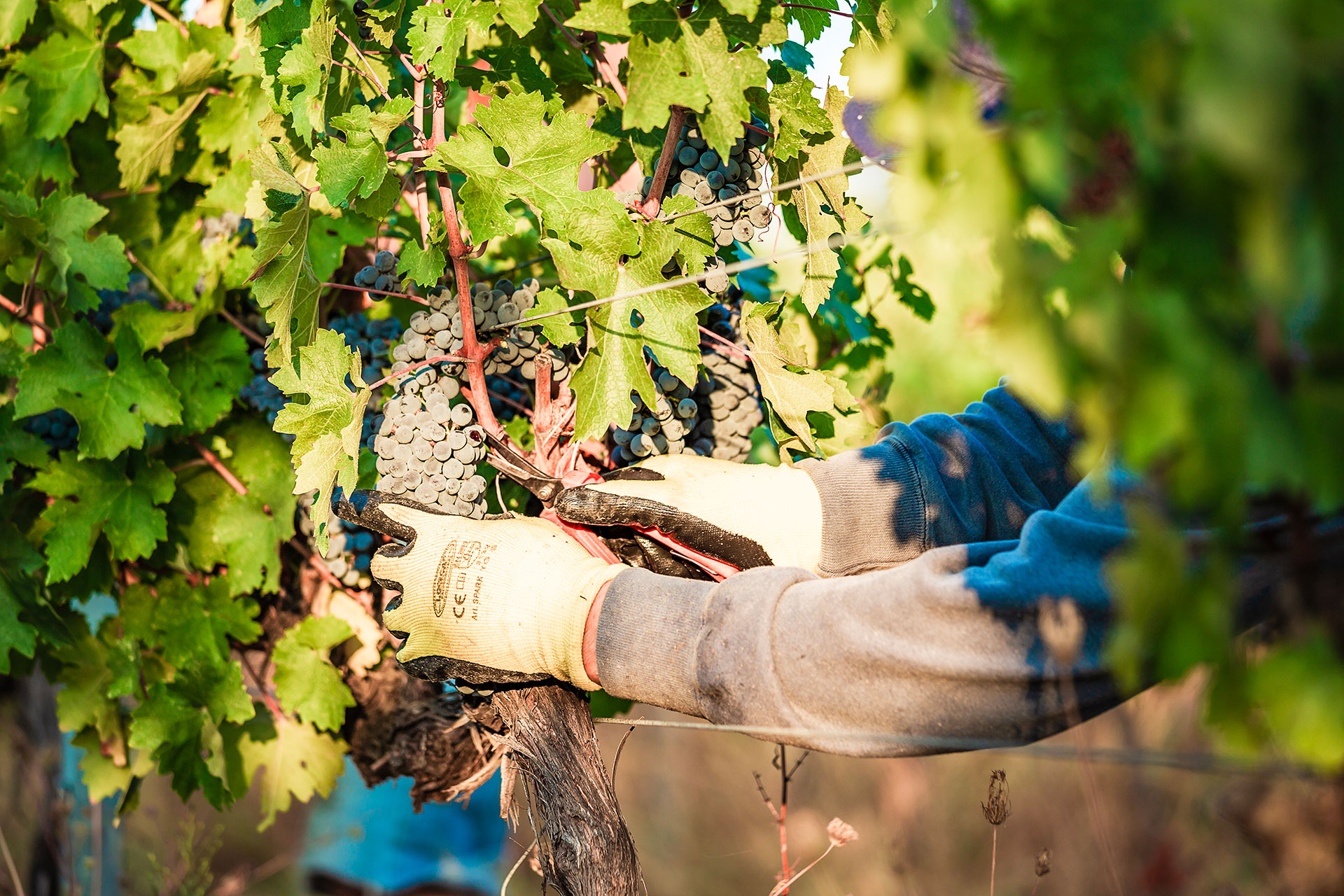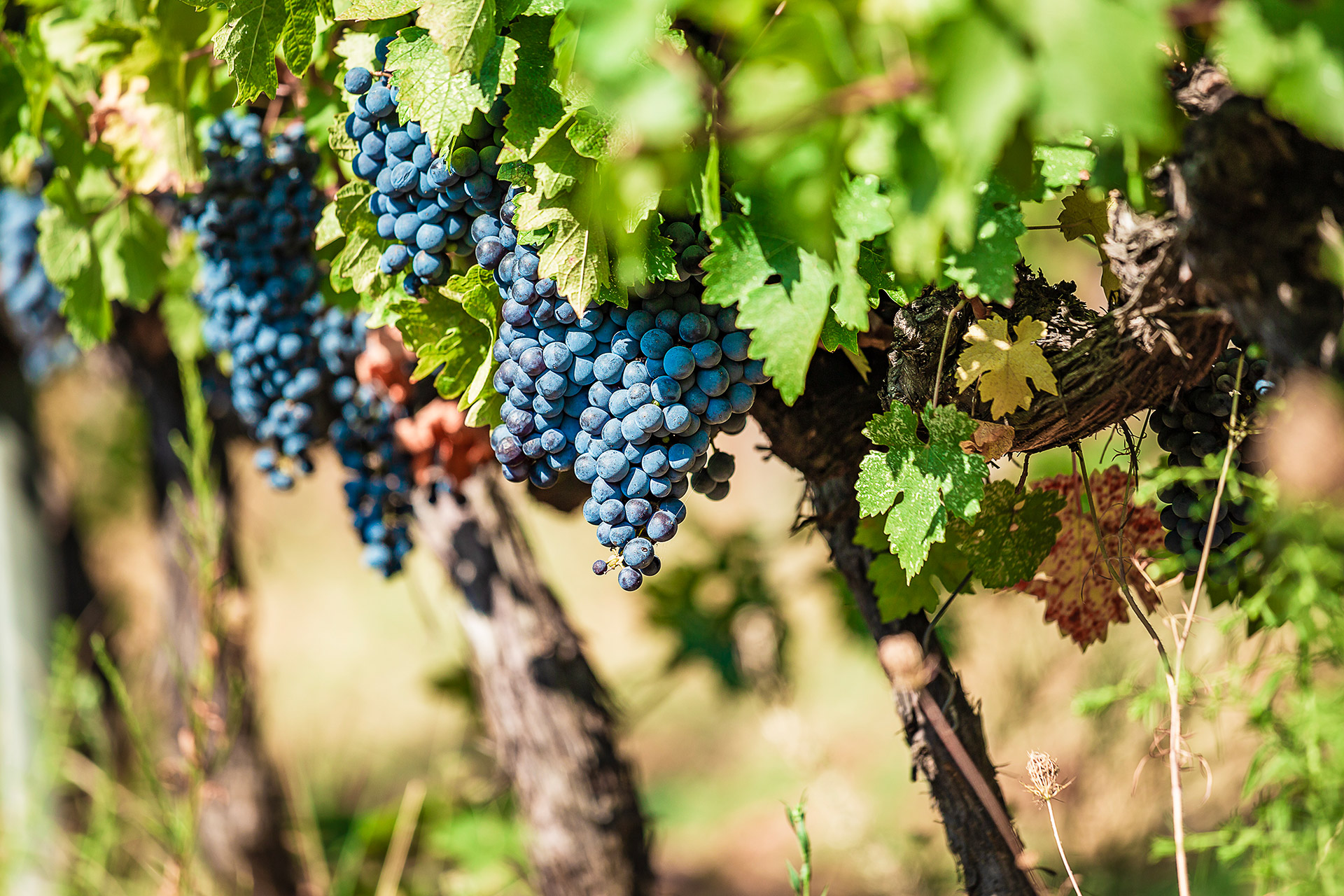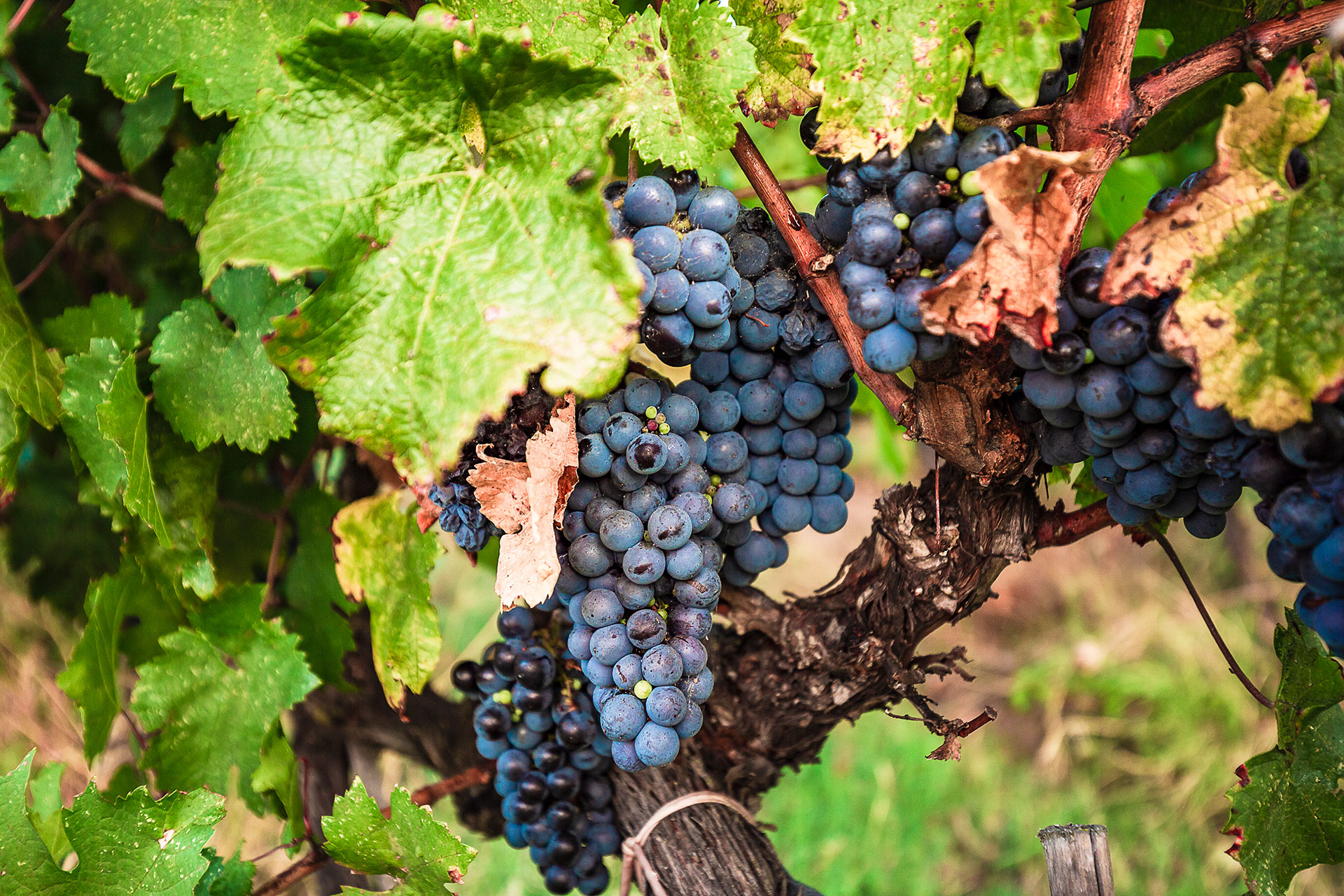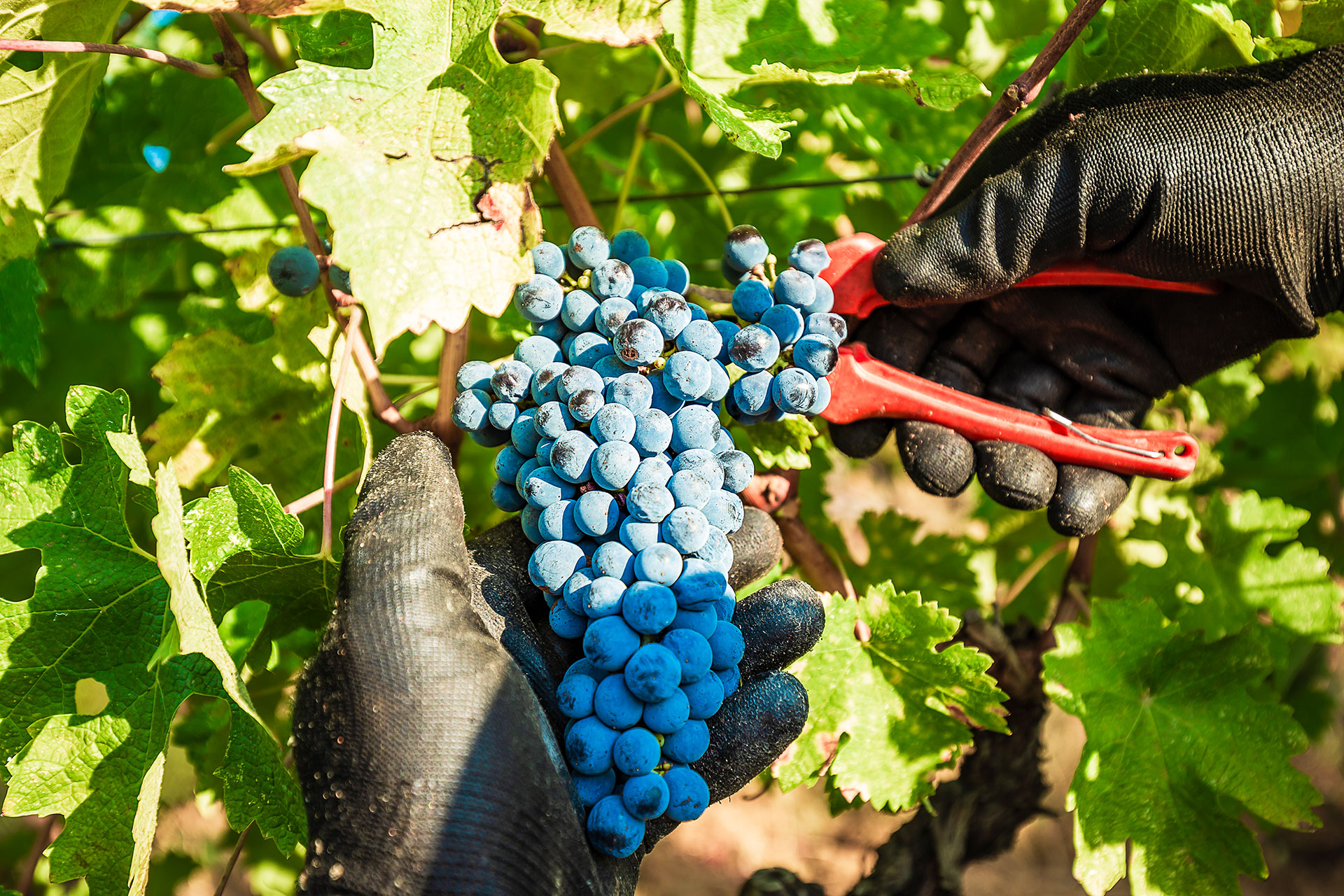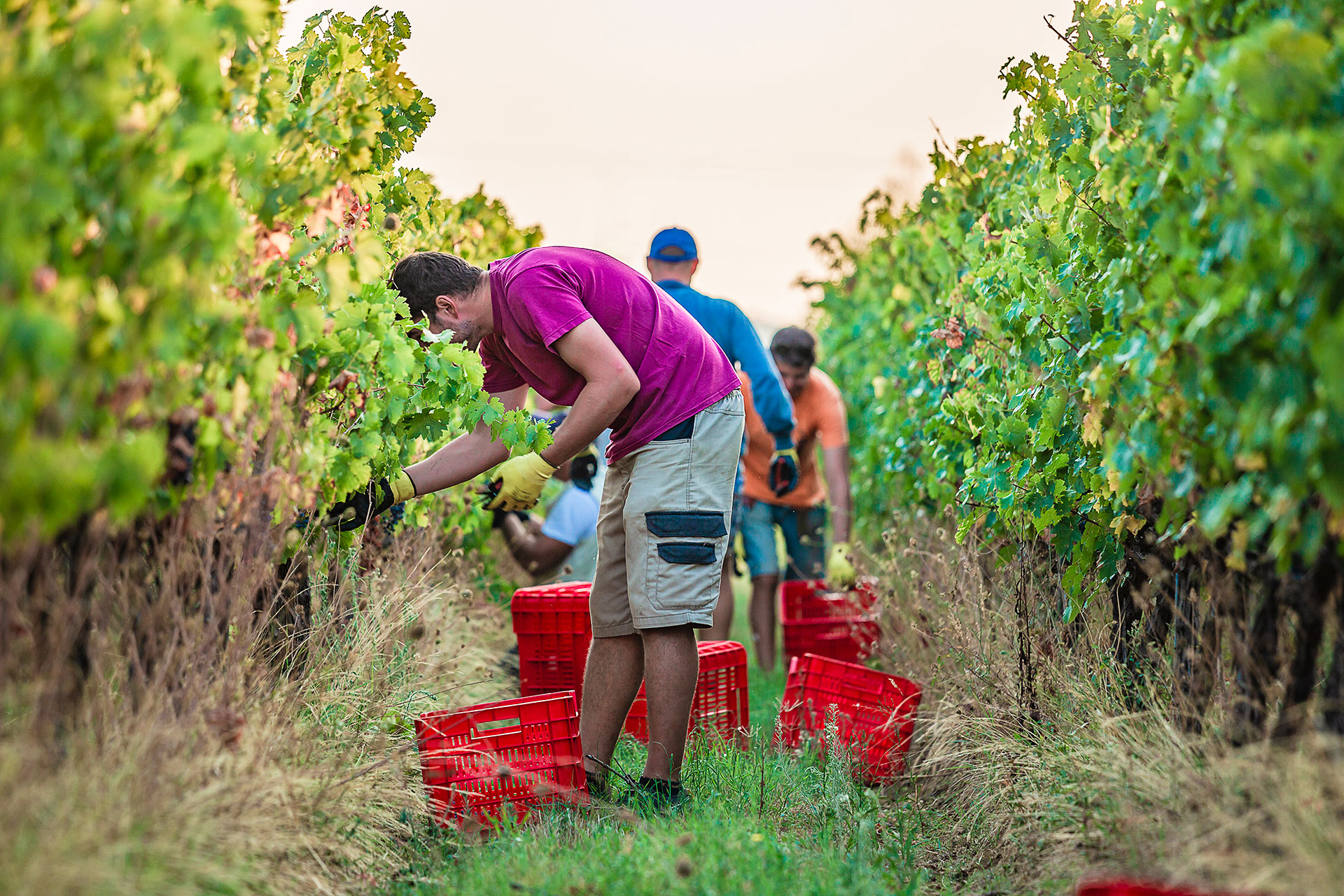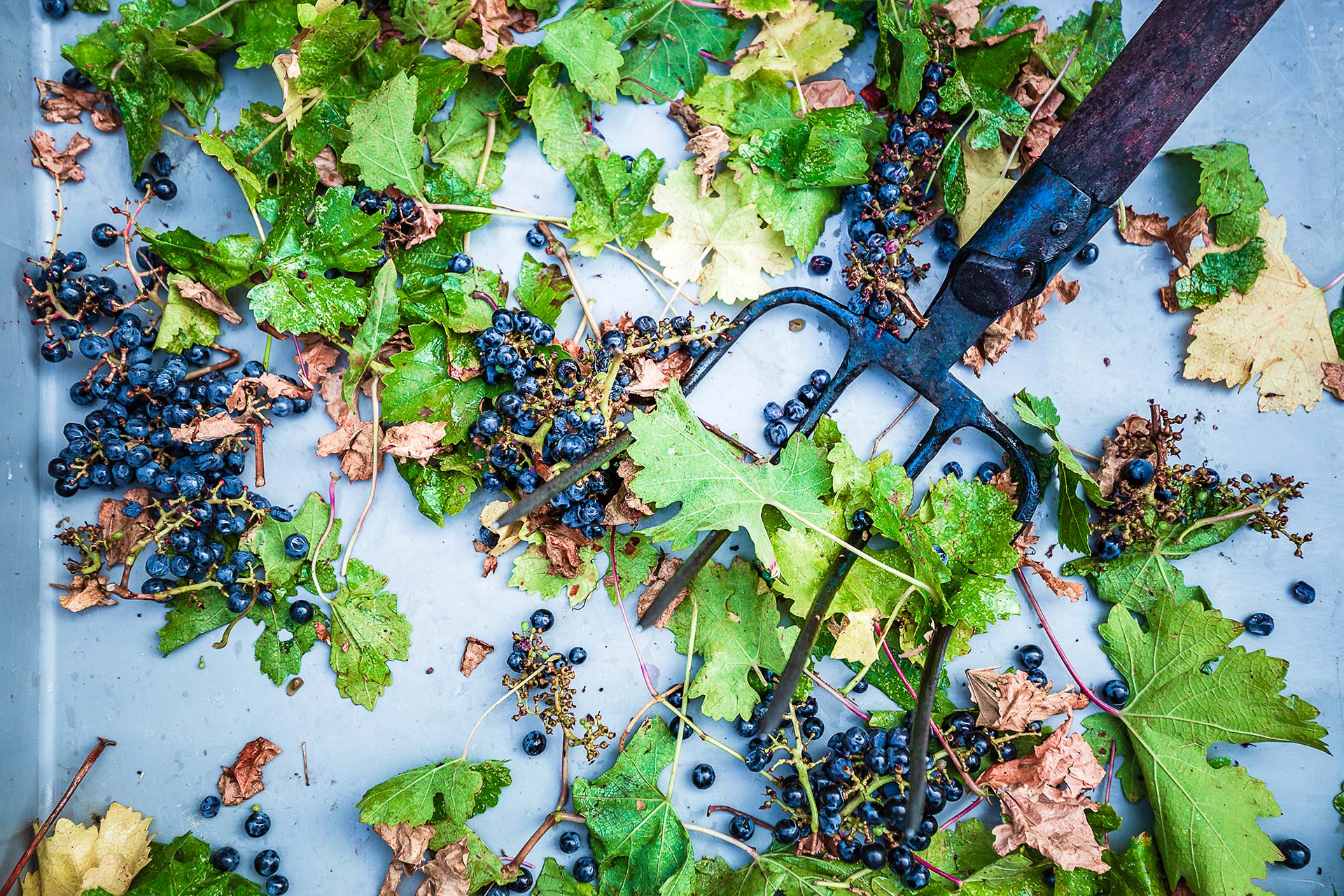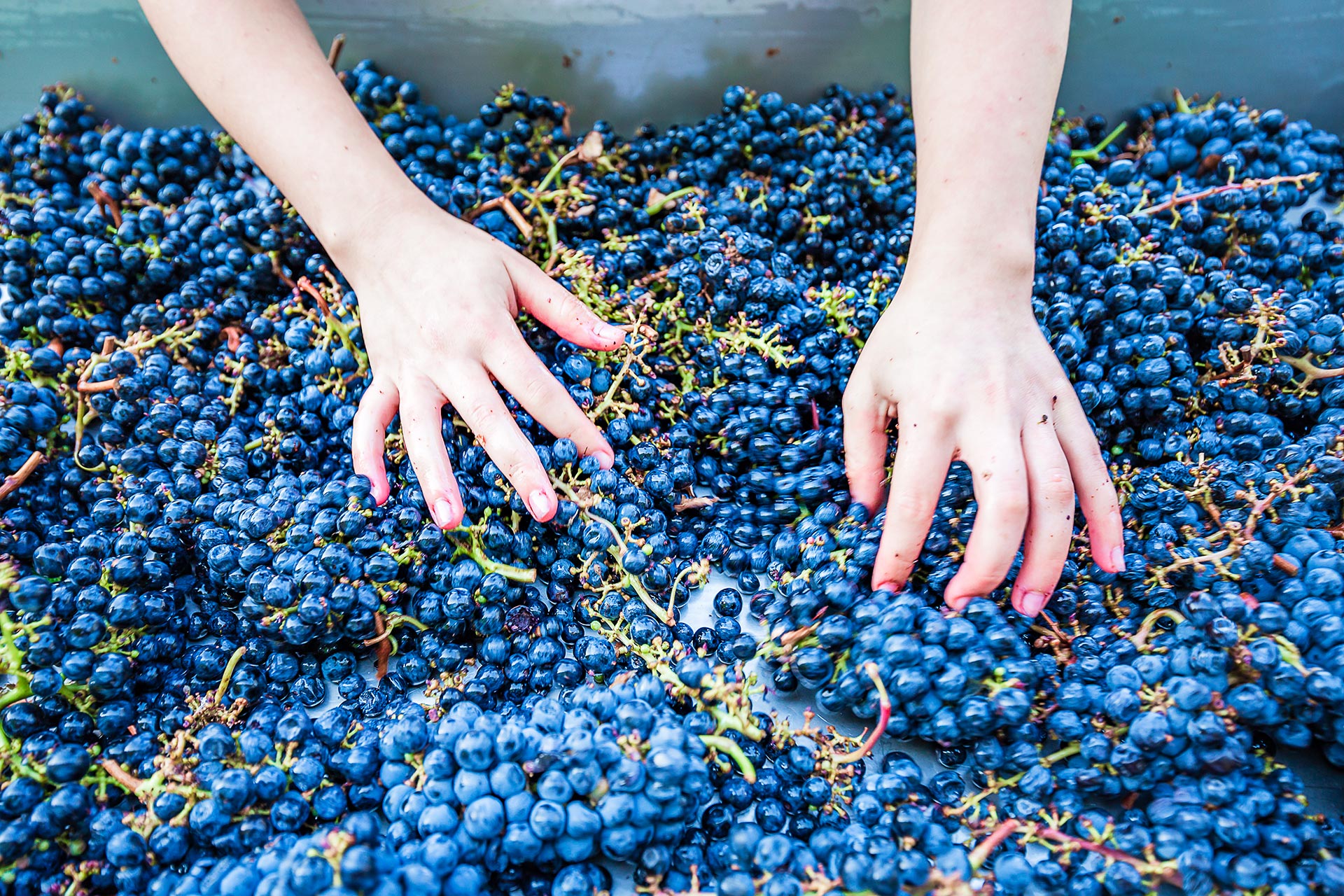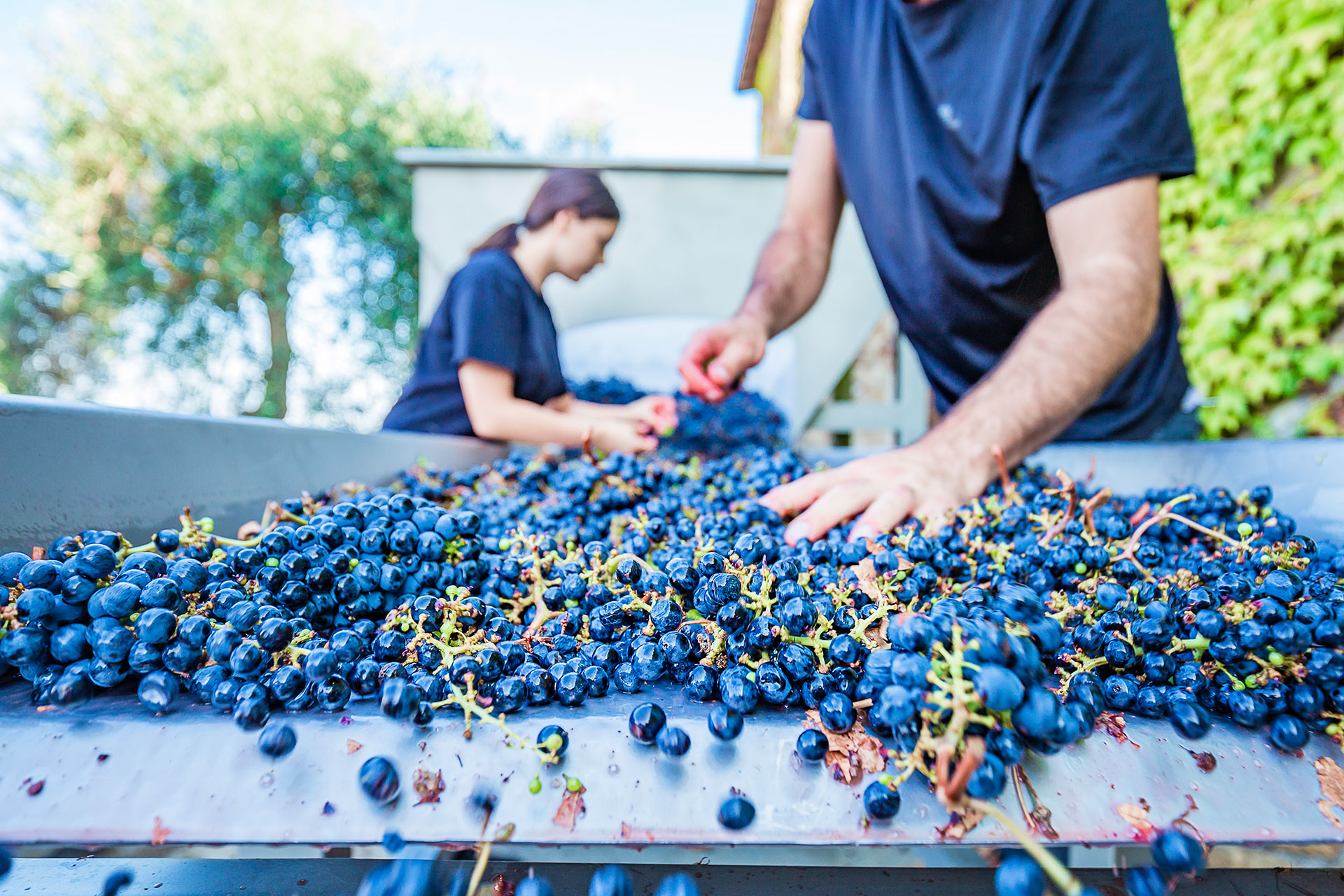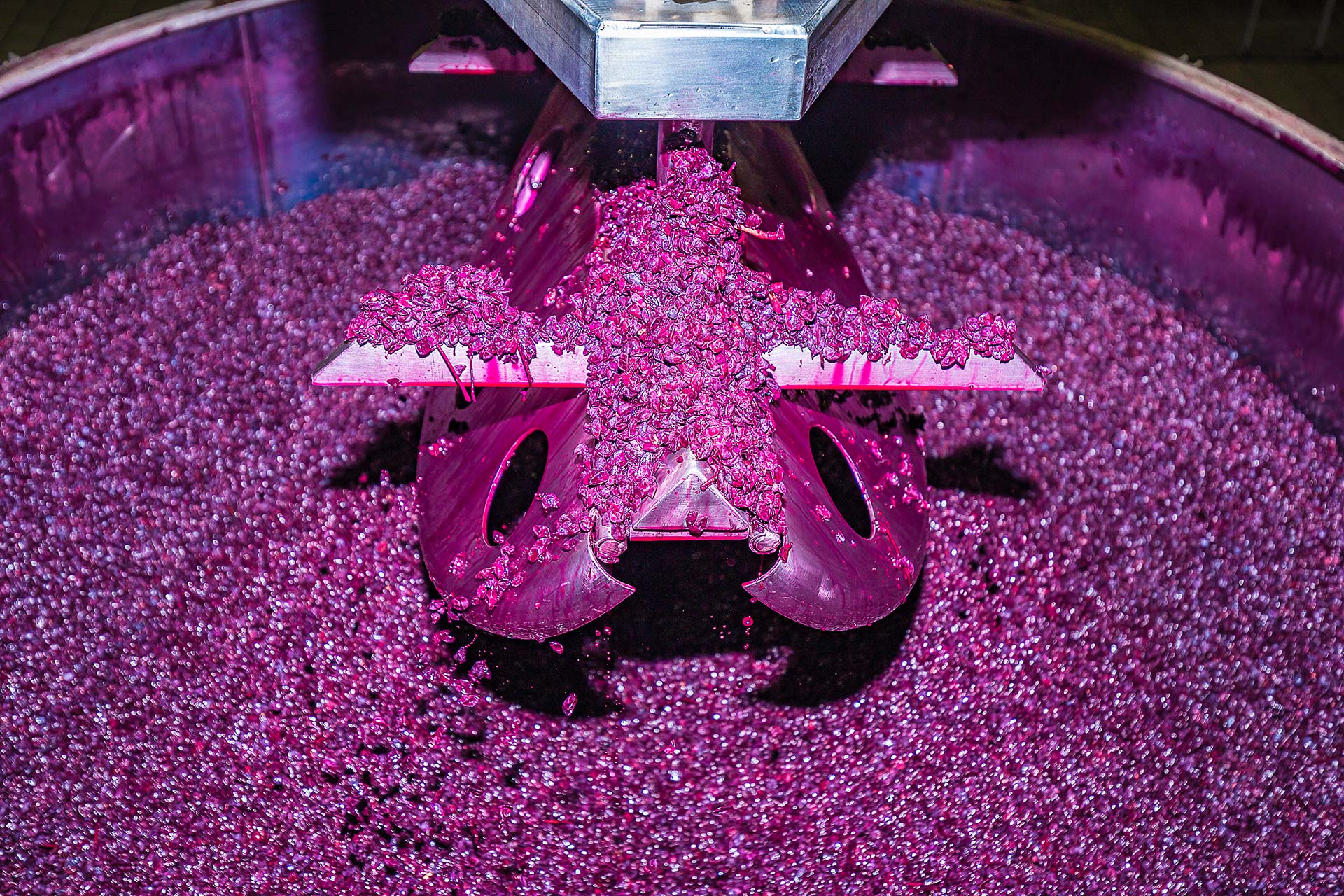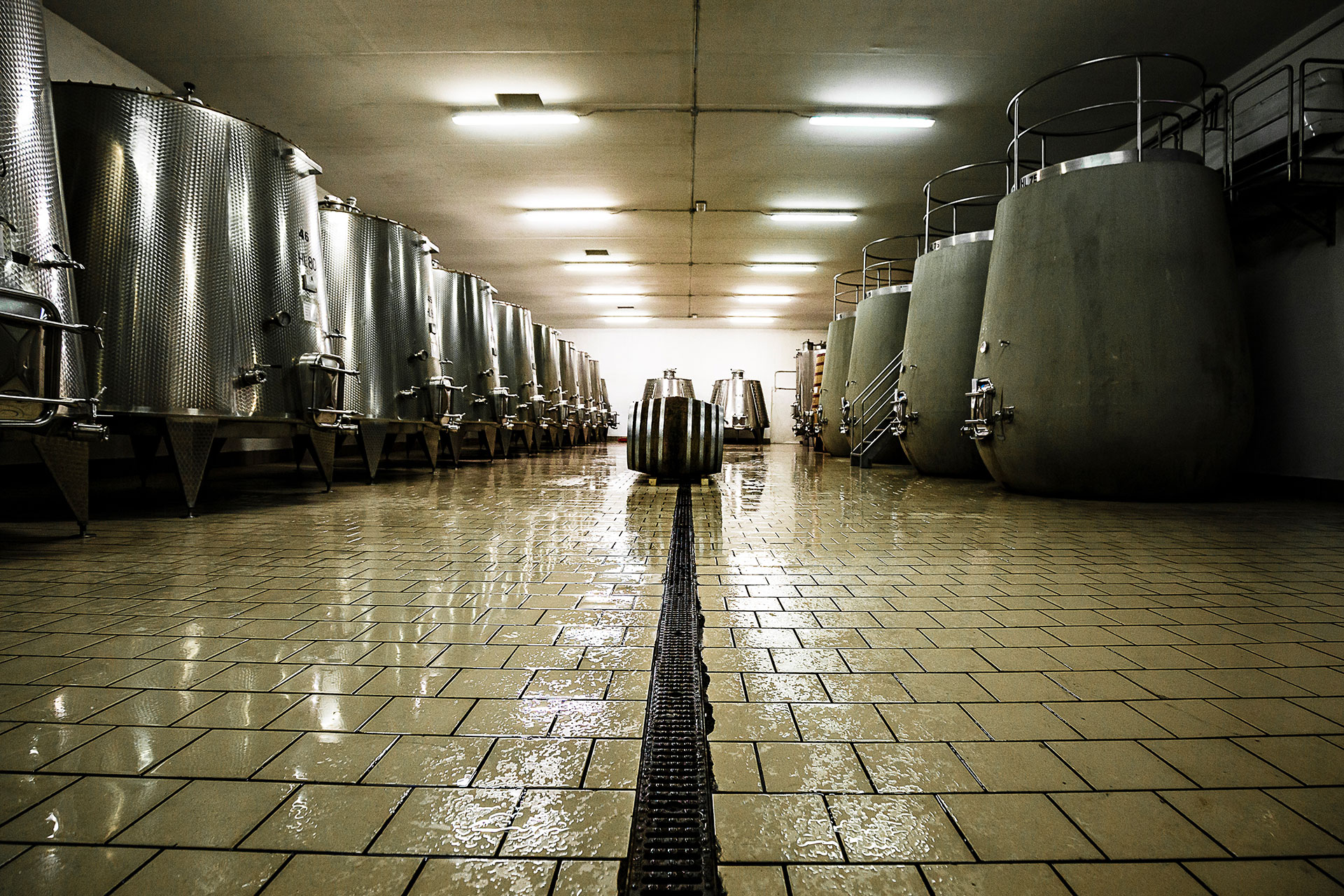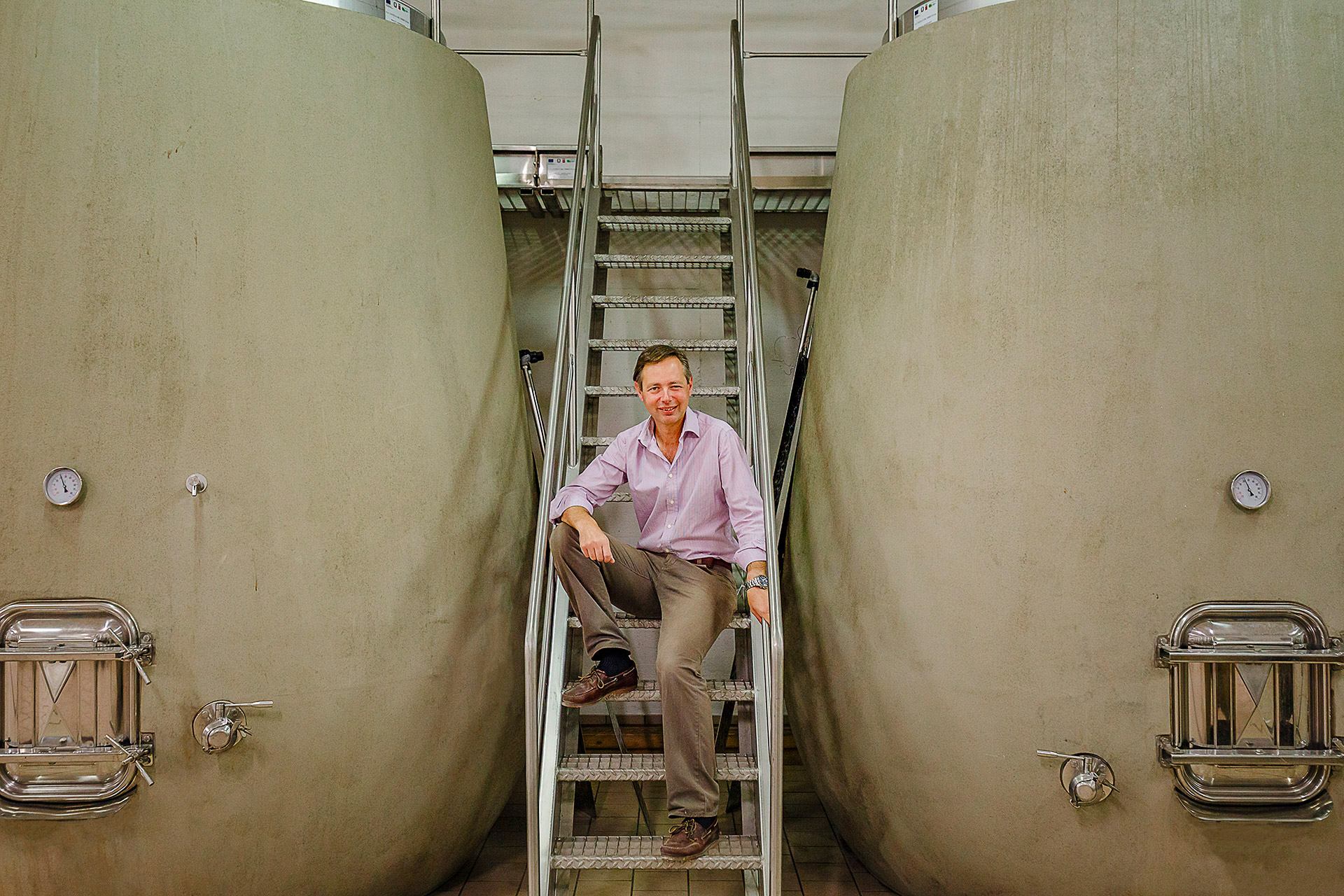Il Terriccio

Castello of Terriccio represents one of the largest winery estate in Tuscany: spanning approximately 1500 hectares in total, of which 65 are allocated to the vineyards and 40 to the olive groves, that extend along the northern border of the Tuscan region of Maremma near Bolgheri.
The fortunate combination of soil, air and light, make this microcosm unique; a place where nature and human intervention are integrated with balance and the latter, with foresight, was able to safeguard the biodiversity of the area over time by maintaining the presence of different crops and spontaneous vegetation next to the vineyards.
The estate offers views of rare beauty and splendor: the vineyards are alternated with forests of oaks, eucalyptus trees and the Mediterranean bush that colors and perfumes the landscape. Beyond the bush you’ll find meadows, farmhouses, grassy plains sloping down to the sea which run along the Maremma coast between Castiglioncello and Bibbona. The various streams and lake that surround them ensure water for plants and abundant wildlife.
From the property, on clear days, you can see four islands of the Tuscan archipelago, and at sunset, the spectacle of the fiery sun disappearing into the Tyrrhenian Sea. Ruins of the medieval castle that gives the estate its name are located on the highest hill, where one has the best view.
In addition to the vineyards and olive groves, the property also breeds Limousin cattle in the wild.
The Vineyards
The cultivation of vines in these lands dates back to the Etruscan times, and at the end of the nineteen eighties a new phase of viticulture was instituted in order to fully explore the potential of the area and its actual vocation.
The large extension of the property allowed them to choose the most suitable land for the vineyards, while taking into consideration the characteristics of the soil, dew point, exposure to sea breezes and exposure to light. The 65 hectares of vineyards are positioned so that the sea acts as a mirror and therefore light comes as a reflection, lasting longer than directly of the sun. The soils provide mineral elements, including iron and copper, to be mixed with the medium-textured weaving , a balanced interaction of sands, silt and clay.
The choice of grape varieties to harvest at Terriccio was meticolous, deciding on a selection of international strains, therefore different from Sangiovese, and the traditional white grapes imaging the possibility of reaching new and important results yet at the same time keeping consistent with the high quality of wines. After the Chardonnay was introduced in 1988 and the Sauvignon Blanc in 1989, the red varietals followed: Cabernet Franc, Cabernet Sauvignon and Merlot, which found particular expression on property, going beyond results achieved in the places they traditionally come from continued in the early nineties, when Syrah and Petit Verdot were introduced to experiment and expand the ampelographic platform in the vineyard and used in micro-vinification in the cellar to verify the capacity for acclimatization and expression.
The vineyards are farmed with spurred cordon for the red varietals and Guyot for the white. To protect the water resources, to contrast to erosion and to safeguard biodiversity, the grassing is maintained in intercalary rows, with manured autumn sowing. The production densities adopted in the new installations are equal to about 6,250 plants per hectare.
The objective pursued with all grape varieties, especially when the winemaker Carlo Ferrini, joined the company in the early 90s, consisted in the reduction of the production, brought to 900 grams of grapes per plant. In this way it was possible to obtain a natural richness and concentration of the wines, with an important polyphenolic charge, a great structure accompanied at the same time by a particular softness , and with a remarkable aging capacity.
The new varieties immediately prove incredibly capable of enhancing the character of the wines and transmitting them the warmth, brightness and richness of this particular stretch of the Tuscan coast. In 1992 Tassinaia was born, the first wine conceived by Gian Annibale Rossi of Medelana, , shortly after, in 1993, Lupicaia was born which immediately reveals the disruptive class of the sample and in 2000 Castello del Terriccio was born and immediately established itself as the second most successful wine of the company.
The Harvest
The time of the harvest varies from year to year based on the climatic trends of the season. The constant monitoring of the degree of ripeness of the fruit is of great importance: the grapes are analyzed very frequently starting from the veraison, in order to determine the starting day of harvest for each section. The grapes for Lupicaia and Castello del Terriccio are harvested by hand.
The Winemaking
The cellar, which dates back to the nineteenth century, has maintained its original structure over time, with its vaulted ceiling and exposed bricks, in compliance with a company style that considers integration with the environment, history and tradition an essential part of the identity and a strong selling point. However, the efficiency and functionality of the modern rooms and equipment of the new cellar are not renounced, where the steel
The research path tanks, the Tonneaux and the Allier oak barriques have long since replaced the old Slavonian oak barrels. The vinification techniques adopted for all the wines are simple and require maximum respect for the original characteristics of the grapes and the special accent given to them by the territory of origin. The winemaking takes place separately and with varying times in relation to the individual grape varieties, plots and years. Without any clarifying, these are then placed in new Tonneaux di Allier for Lupicaia and Castello del Terriccio, which are subsequently reused for Tassinaia. The wines remain in wood for an average period of 22 months for Lupicaia and Castello del Terriccio, and 16 months for Tassinaia, before blending. Each wine is given the necessary time to refine and fully express itself, leaving ample room for evolution and improvement. After bottling, the red wines rest for a few months for further refinement. Castello del Terriccio today produces 200,000 / 250,000 bottles a year.
The New Cellar
This building was built underground to maintain the right temperature and humidity in a natural way and without having to resort to energy consumption.
Inside, the spaces are entirely occupied by truncated-cone steel tanks, Tulipe cement tanks and wooden truncated-cone tanks.
Vinification phase is complete, the wines start the aging process.
Once the choice between the different types of aging (steel, concrete and wood) ensures that our wines maintain complexity and elegance.
The steel vats are used for wines that need short aging. The concrete vats are excellent containers for wines with medium to long aging and guarantee a natural degree of isolation. French oak tonneaux are ideal for wines of great structure; the porosity and the different degrees of toasting selected by us guarantee the slow and constant exchange of oxygen to the wine.
The Historical Cellar
Located on the ground floor of one of the historic buildings of the ancient village, it dates back to the second half of the 19th century, as evidenced by the date on the entrance door, when the production of quality wines at Terriccio began.
It was used to carry out all the winemaking processes of our wines until 2005, when the new cellar was inaugurated, but to this day it still houses some stages of aging of the wines.
The Barriccaia
Located on the upper floor of the historic cellar building, the wines here rest in French oak tonneaux.


